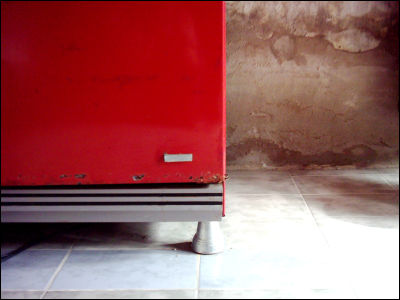The wallet you dropped is more likely to come back the more money you have in it

by
In a large experiment conducted in 40 countries and 355 cities in the world using 17,000 pieces of saif, the research results show that 'the more money you have in a saif, the more the saif will return to the owner' It was indicated. The results of this experiment seem to be contrary to the expectations of the general public and economists.
Civic honesty around the globe | Science
https://science.sciencemag.org/content/early/2019/06/19/science.aau8712
“Missing” Wallets with More Cash Are More Likely to Be Returned-Scientific American
https://www.scientificamerican.com/article/missing-wallets-with-more-cash-are-more-likely-to-be-returned/
The economists who conducted the research deliberately dropped 17,000 pieces of money containing various amounts of money to public and private institutions in 40 countries in three years, and the money returned to the owner of the owner I investigated what would come. As a result of this, it is first found that the probability that the wallet will return depending on the country is different. The country with the highest return rate is 76% in Switzerland and the lowest in China is 14%.
From the figure below, we can see the probability of the return of the wallet in the country where the survey was conducted. The orange dots represent 'no money' and the red dots represent 'money', the more the dots are on the right, the higher the probability of returning.

And, it is interesting that although there is a variation in the probability that the wallet will return depending on the country, it has been shown in 38 out of 40 countries that “the wallet will return to its owner as money gets in”. Although this was a result that was contrary to the researchers' predictions, a follow-up survey was also conducted, but in the end, 'In any country, people want to avoid thinking of themselves as' the thief ', and
Although this kind of experiment tends to be conducted within a limited range of 'laboratory', it is one of the points that this research has attracted attention because the experiment was conducted on a large scale in a real city. It is one. In an experiment that spans multiple countries, cities and institutions, the fact that 'the same pattern was seen in 38 out of 40 countries' is regarded as a very clear and powerful discovery.
Originally, this research started from a small scale experiment. In 2013, Michel Maréchal of the University of Zurich and Alain Cohn of the University of Michigan asked a Finnish student to pose as a tourist and drop a wallet in the city, pick it up and 'drop it off to a nearby staff member. I found an saif, but I wanted you to deal with it. ' As a result, it was indicated that 'the larger the amount of money in the wallet, the wallet will return to the owner,' and the two unbelievable researchers further tripled the amount and conducted the experiment. However, even if the amount was tripled, the result that 'the larger the amount, the more the wallet will be returned' has not changed. Two researchers, who thought that “these results are not Finland,” made an experiment in 355 cities in the world.

by
The wallet used for the experiment in 40 countries in the world was made of transparent plastic, and it was 'no money at all' or '1400 yen equivalent'. In addition to money, it contains keys, purchase notes written in local language, and 3 business cards with local names, so the unit is transparent and it is included in the amount and contents even without opening the wallet I knew what it was. The experiment place is unified in the area where there are receptions such as banks, museums and hotels, and the research assistant approached the staff at the counter of the facility and said, 'I found this in the corner of the road, but I have to go now, Would you like to handle Saif properly? ' The assistant was left without leaving any contact information, and it was then investigated whether the staff who received the wallet would contact the owner within 100 days.
As a result, it has been found that the possibility of being reported that money is added to the wallet rises from 41% to 51% on average. Researchers who could not believe the results of the experiment conducted additional experiments such as 'control the age of the person receiving the wallet' and 'adjust the conditions of the witnesses and the surveillance camera', but the results remain the same. Furthermore, in three specific countries, the amount was raised to about 10,000 yen and the experiment was conducted, but the report rate in this case has increased to 72%.

by Square Follow
In the study, American adult subjects described the experiment and predicted what would happen. 'As the amount of money increases, the proportion of people who make money their own without reporting increases.' The majority of people said that. A similar trend was observed in surveys of economists, who predicted that 'the return will fall slightly as money increases.'
The return rate of the wallet in the country where the experiment was conducted was found to be related to the 'honestness' elements such as 'corruption rate' and 'tax exemption' in that country. However, researchers have noted that there is a consistent tendency to 'more money drives honesty' rather than such relationships. The exception that did not apply to the pattern 'the higher the money, the higher the return rate' is Mexico and Peru.
In addition, Japan was not included in this experiment place.
Related Posts:
in Note, Posted by darkhorse_log







